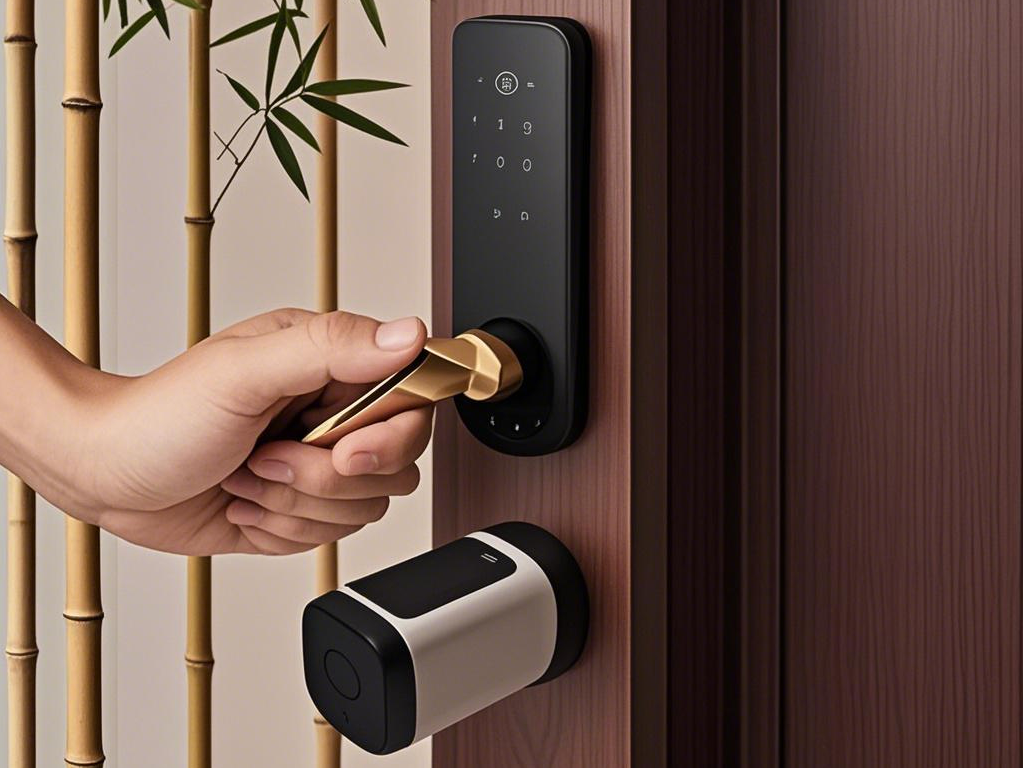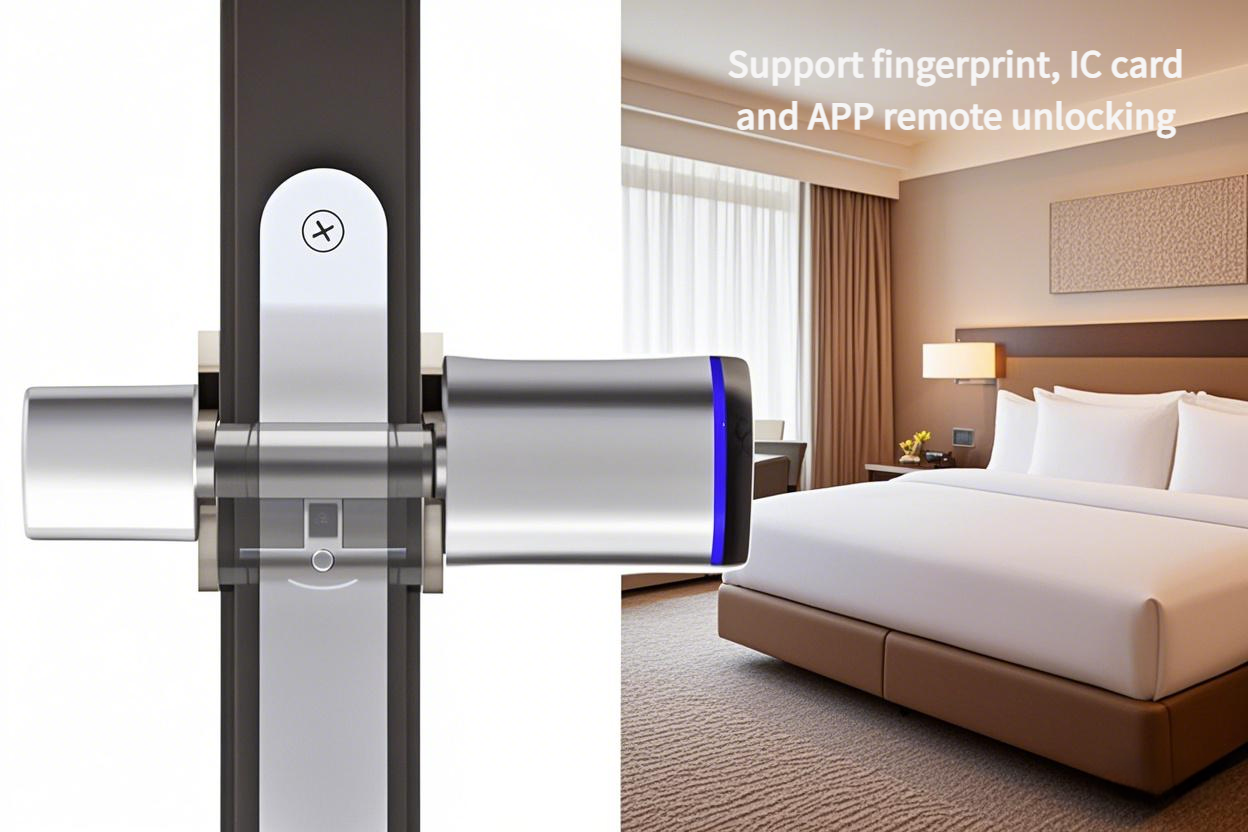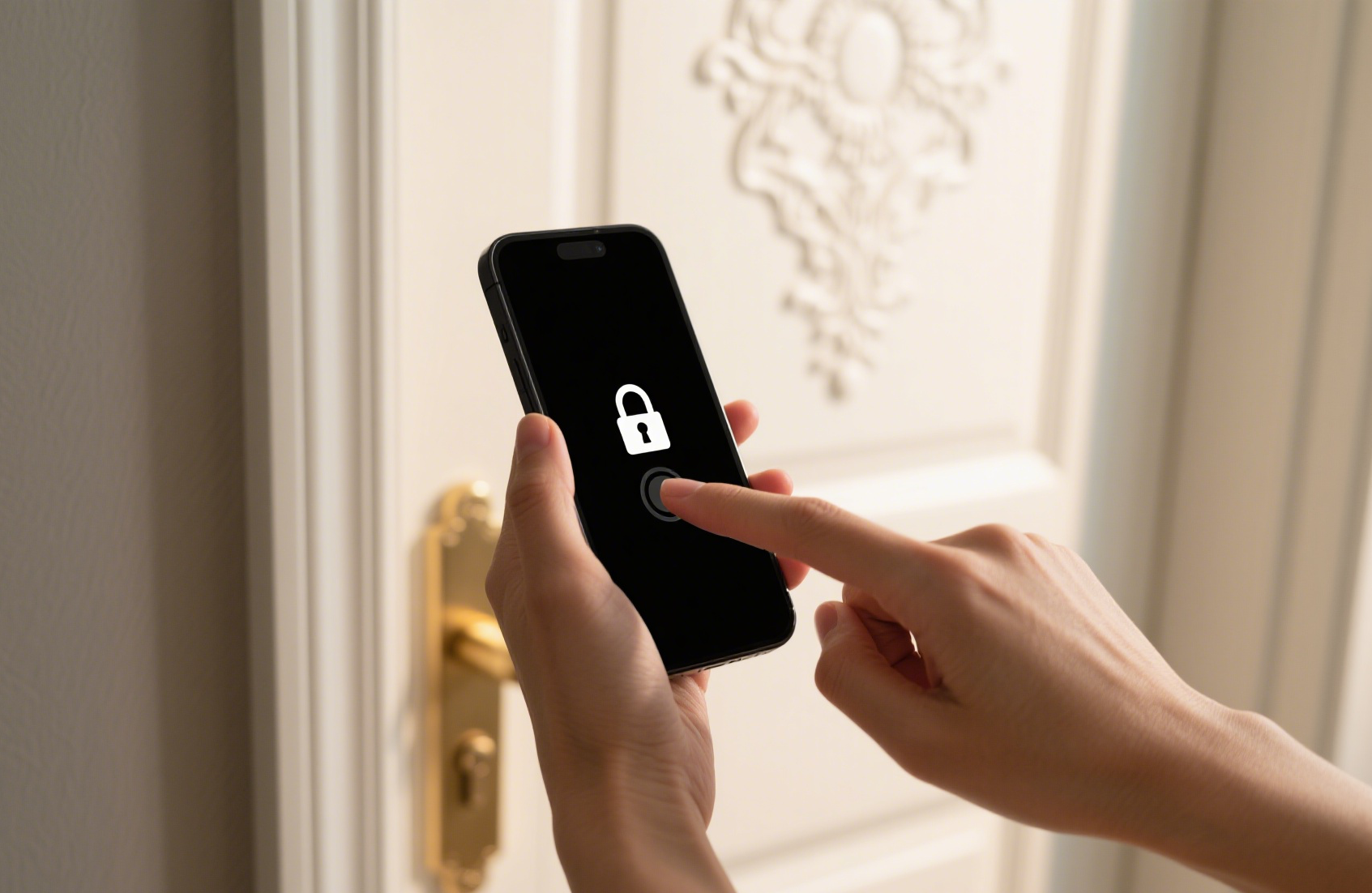Smart Lock Cylinder vs. Traditional: Which Reigns Supreme in Security?

Smart keyless lock cylinders are safer than regular locks. Picking the right lock is important for keeping your home safe. Many homeowners now use smart door locks, including smart keyless lock cylinders. These locks have features like fingerprint scanning and eliminate the need for keys. This means you won't lose keys and can unlock doors with your phone. More people want smart home technology, which shows a move towards safer and smarter homes.
Key Takeaways
Smart locks have cool features like fingerprint scanning. This makes them safer than regular locks.
Smart locks get updates and use strong passwords. This helps protect homes from online threats.
Regular locks can be easily broken into by picking or bumping. This shows we need high security options.
Smart locks let you enter without keys. You can also control them from far away for better home management.
It's easy to install smart locks with just a few tools. This makes them a good choice for homeowners wanting better security.
Security Features of Smart Door Locks

Smart door locks have special security features. These features make your home safer. Knowing these features helps you pick the right lock.
Hardware Security
The hardware in smart door locks is very important. Many smart locks are tested to meet high safety standards. They are checked for strength and how well they resist attacks. Here are some important hardware security features:
Biometric Technology: Smart locks often use fingerprints for access. This means you don’t need keys or complicated codes. It is safe and easy to use.
Threat Modeling: This process finds possible dangers and sets safety goals. It helps your smart lock handle different attack situations.
Compliance Standards: Many smart locks get certified by outside labs. This shows they follow safety rules. For example, the BSI Smart Residential Locking Device Kitemark shows it meets IoT standards.
Security Feature | Description |
|---|---|
Threat Modeling | Finds important items, possible damage, and threats to set safety goals for smart locks. |
Biometric Technology | Uses unique personal identifiers (like fingerprints) to boost safety and lower risks. |
Connectivity Options | Lets you update and connect with other smart home devices, making safety better. |
Software Security
Hardware safety is key, but software safety is also very important. Smart locks use advanced tech to protect against cyber threats. Here are some key software security features:
Robust Authentication Mechanisms: Smart locks should have strong ways to check who you are. Look for locks that use encrypted messages and have been checked by outside experts.
Regular Updates: Many smart locks can be updated. This fixes problems and improves safety features over time. It keeps your lock safe from new threats.
Vulnerability Assessments: Studies show that smart locks can be weak to wireless attacks, like Bluetooth and RFID. Picking a lock with strong safety features can help reduce these risks.
To keep your smart door lock safe, avoid models that only use Bluetooth without extra safety features like passcodes or two-factor authentication.
Vulnerabilities in Traditional Lock Cylinders

Traditional locks, like deadbolts, have big weaknesses. These can put your home security at risk. Knowing these problems is important for your safety.
Physical Attacks
Physical attacks on traditional locks happen often. They can be very effective. Here are some ways intruders break in:
Lock Picking: Skilled thieves can open traditional locks easily. They use simple tools and do it quickly.
Bumping: This method uses a special key to open a lock. Many traditional locks can be opened this way in seconds.
Drilling: Some intruders drill into the lock cylinder. This can ruin the lock and let them enter your home.
These weaknesses show why you need better security features. Traditional locks do not offer this. You should think about switching to smart locks for better safety.
Cybersecurity Risks
Traditional locks also face cybersecurity problems. They don’t connect to the internet, but they can still be at risk. Here are some cybersecurity issues:
Weak Integration: If you use traditional locks with smart devices, weak spots can appear. Hackers can take advantage of these to get into your home.
Lack of Updates: Traditional locks don’t get software updates like smart locks. This leaves them open to new threats without any improvements.
In today’s digital world, only using traditional locks can be risky. Upgrading to smart locks with better security features can greatly improve your home’s safety from both physical and cyber threats.
Keyless Convenience of Smart Locks
Smart locks give you a keyless way to manage home security. You won't need to search for keys anymore. Instead, you can enjoy easy access options that match your lifestyle.
User Access Control
A great feature of smart locks is user access control. You can easily decide who can enter your home. Here are some benefits:
Customizable Access: You can make special codes for family or friends. This helps you control who can enter at any time.
Temporary Access: Need to let a friend in while you're gone? You can send them a code that only works for a short time.
Real-Time Monitoring: Many smart locks let you see who goes in and out of your home. Users say this feature makes it easier to check on things through smartphone apps.
The growth of smart home devices matches the rise of connected door locks. This shows that more people want the better security and ease that smart locks offer.
Remote Management
Remote management features make smart locks even more convenient. You can lock or unlock your door from anywhere using your phone. Here’s how it works:
Pros | Cons | |
|---|---|---|
Kwikset Kevo | - Key-free options available | - Batteries may drain quickly |
- Mobile notifications of PIN use | ||
- Remote locking/unlocking via app | ||
August Smart Lock Pro | - Unlimited temporary and permanent PINs | - Too wide for some doors |
- Works with many security systems | ||
- Door Sense shows if the door is open or closed | ||
- Wi-Fi bridge included, no hub needed | ||
- Easy to install by yourself |
With these features, you can feel safe knowing you can secure your home from anywhere. Smart locks not only keep your home safe but also improve your overall protection plan.
Installation of Smart Door Locks
Installing a smart door lock is easy. It usually takes less than ten minutes to complete. Keyless door locks, such as the Inslock, are designed for simple installation. Here's what you should know about the ease of installation:
Installation Complexity
Simple tools: Most smart locks only require a screwdriver. This makes them ideal for DIY enthusiasts.
Standard fit: Inslock keyless door cylinders are sized to fit European-style wooden doors, so you don't have to drill holes or replace doors.
Battery-powered for convenience: Smart locks are battery-powered. You don't need wiring, so you can install it yourself.
Tip Be sure to read the manufacturer's instructions for best results. This contributes to the good functioning and security of the lock.
Maintenance Requirements
Smart locks are easier to maintain than traditional locks. Here’s a comparison that shows these benefits:
Aspect | Traditional Locks | Smart Locks |
|---|---|---|
Rekeying Expenses | You often need to rekey them | Digital keys mean no rekeying needed |
Key Duplication | You have to replace lost keys often | No need for key duplication |
Maintenance | Regular repairs are needed | Less maintenance with strong parts |
Enhanced Security | N/A | RFID tech lowers theft risk |
Improved Efficiency | N/A | Easy access control helps productivity |
Energy Savings | N/A | Works with automation systems |
Smart locks need very little maintenance compared to traditional locks. You won’t worry about lost keys or rekeying often. The strong parts of smart locks keep them working well over time, making them a smart choice for home security.
In comparing lock security, smart locks are much better than traditional ones. They provide better safety with features like special access codes and real-time monitoring. These keyless smart door locks make life easier and help you avoid being locked out. For homeowners, buying smart home technology is a smart choice. It not only improves your lock security but also works well with other smart home devices. Welcome the future of home security and pick smart locks for a safer, easier life.
FAQ
What is a keyless lock system?
A keyless lock system lets you open your door without keys. You can use codes, fingerprints, or apps on your phone. This makes it easier and safer for your home.
Are smart locks safe from hacking?
Smart locks have strong security features to stop hacking. Regular updates and good ways to check identity keep your lock safe. Pick a trusted brand for extra safety.
How do I install a smart lock?
Installing a smart lock is usually easy. Most models fit regular doors and need just simple tools. Follow the instructions from the maker for a fast setup.
Can I use a smart lock with my existing door?
Yes, many smart locks work with current doors. Make sure to choose a model that fits your door type. This way, you can improve security without big changes.
What happens if the battery dies?
If the battery dies, most smart locks have backup options. You can often use a physical key or connect a power source for a short time. Check battery levels often to prevent lockouts.
